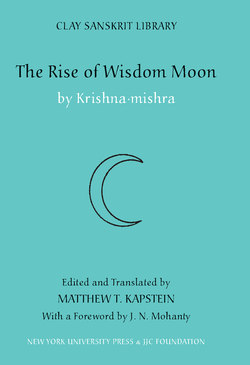Читать книгу The Rise of Wisdom Moon - Krishna mishra - Страница 42
На сайте Литреса книга снята с продажи.
Оглавлениеintroduction
reasons, Krishna·mishra’s sectarian inclinations appear to me to be weaker than is generally assumed, and the Vaishnavism of his work, while by no means to be denied, may be explained without reference to strong sectarian bias.
The Vaishnava current in “The Rise of Wisdom Moon” is underscored principally by these features: the heroine of the drama is the character Vishnu·bhakti, Hail Vishnu in our translation; at the conclusion of act four, Intuition undertakes a pilgrimage to the shrine of Vishnu in Varanasi (4.123); in act five, Thought is instructed in meditation upon Vishnu as an alternative to absorption in the absolute Brahman (5.103 [27]); and references to a number of Vishnu’s incarnations are found throughout the work. Taken together with arguments that have been most clearly presented by Paul Hacker, to the effect that early Advaita Vedanta, as represented above all by Shankara, was mildly Vaishnava in its leanings, it is undeniable that Krishna· mishra clearly expresses a similar partiality here, though “fanatic” is no doubt too strong a characterization of his leanings (Hacker 1965).
The Vaishnava reading of the text is mitigated by a number of positive gestures to Shaivism, and indeed to other sectarian traditions, at various points in the play. This despite the wholesale rejection, in act three, of the transgressive Kapalika current of Shaivism as altogether heretical. Nevertheless, the second of the opening verses of benediction is dedicated to Shiva, with distinct allusions to systems of yoga that were often placed under that divinity’s patronage. (The first of the benedictions concerns the nondual Brahman, and therefore has no distinct sectarian orienta- ________
xl
